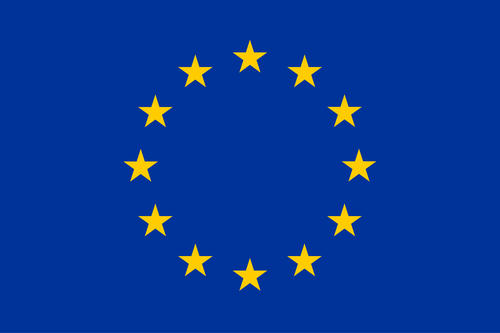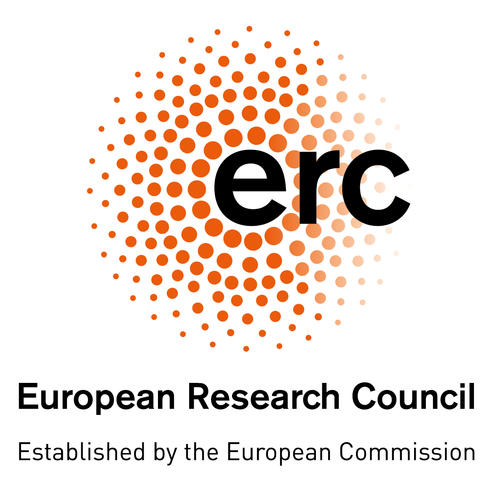News
Congratulations to Luigi Grisoni on his habilitation!
Luigi Grisoni Achieves Scientific Habilitation in Italy We are thrilled to announce that a member of our lab, Luigi Grisoni, has been awarded the Abilitazione Scientifica Nazionale by the Ministero dell’Università e della Ricerca in Italy. Congratulations to Luigi on this well-deserved recognition!
Jan 06, 2025 | ERC Advanced Grant 883811, MatCo: Material Constraints Enabling Human Cognition
New Paper published!
Carriere, M., Tomasello, R., & Pulvermüller, F. (2024). Can human brain connectivity explain verbal working memory? Network: Computation in Neural Systems , 1–42. Maxime Carriere, Rosario Tomasello & Friedemann Pulvermüller published a new research paper in Network: Computation in Neural Systems. The study investigates why humans can acquire large vocabularies while non-human primates cannot, focusing on differences in cortical connectivity. Using brain-constrained neural network models, it simulates auditory word recognition and verbal working memory. Human-like models, with denser connectivity in language areas, showed larger, semantically structured cell assemblies and longer-lasting neural activity, supporting robust verbal working memory. These findings reveal how human-specific brain structure enables extensive vocabulary building. Find the study here .
Nov 12, 2024 | ERC Advanced Grant 883811, MatCo: Material Constraints Enabling Human Cognition
Talk at DGKL in Osnabrück
Fynn Dobler will present recent findings on building abstract concepts via the presence of linguistic forms which therefore do not just support but truly enable their formation. You can find more information about the conference here .
Sep 02, 2024 | ERC Advanced Grant 883811, MatCo: Material Constraints Enabling Human Cognition
The MatCo project is featured in the 'Project Repository Journal'
The European Dissemination Media Agency (EDMA) reports on the MatCo project in detail in their latest issue of the project repository journal (PRj). You can directly access the article here , and for more information about the issue, you can find it here .
Jul 10, 2024 | ERC Advanced Grant 883811, MatCo: Material Constraints Enabling Human Cognition
Friedemann Pulvermüller Speaks on Brain-Constrained Neural Networks at ISC Summer School
For the ISC Summer School on Large Language Models, Friedemann Pulvermüller gave a talk on Semantic grounding of concepts and meaning in brain-constrained neural networks. You can watch the full lecture here .
Jun 05, 2024 | ERC Advanced Grant 883811, MatCo: Material Constraints Enabling Human Cognition
New paper: Verbal Symbols Support Concrete but Enable Abstract Concept Formation: Evidence From Brain-Constrained Deep Neural Networks
Brain-constrained neural network shows how words enable learning of abstract concepts You can pet a dog , see the sun and use a hammer , but you cannot see democracy or touch peace . Despite this, you can identify an action as democratic , just like you can identify a poodle as a type of dog. How does your brain learn these different concrete and abstract concepts? And does having a word for a concept help with learning it? In a recent publication from the Brain Language Laboratory at Freie Universität Berlin, a brain-constrained neural network was used to investigate the neuronal mechanisms behind these processes. Concepts are built from the ground up In real life, concepts are usually acquired over time, by encountering many different exemplars of the concept. For example, dogs come in many shapes and sizes – like poodles, huskies and chihuahuas – but they all share some features that allow us to identify them as dogs. We can think about abstract concepts in the same way: exemplars of democracy might be raising your hand to to make your opinion known in a poll, casting your vote on a specific issue in a direct democracy or electing a representative in a representative democracy. These exemplars are different to dog breeds: they do not all share features that allow us to identify them as democratic, even though subsets of them might share some features. For example, the motor actions behind casting your vote in a direct and a representational democracy are the same, but what you vote on is different. Likewise, raising your hand in the poll and casting your vote in a direct democracy are different actions, but what your vote expresses is the same. Still, you can identify all these actions as democratic. The brain-constrained neural network was trained to learn concepts following these assumptions. When simulating the experience of exemplars of concepts, overlapping sets of neurons were always activated for concrete concepts, while only partially overlapping set of neurons were activated for each exemplar of an abstract concept. Learning was implemented in a biologically realistic way: neurons that fired at the same time strengthened their synaptic connection, whereas the connections between neurons that fired asynchronously weakened. Different layers of the network represented different areas of the human cortex. This allowed for modelling visual stimuli, hand-motor actions as well as auditory stimuli and articulatory actions. With this design it was possible to either only present the network with visual and motor exemplars of concepts, or to additionally provide the same spoken word for all exemplars of the same concept. Words are necessary to learn abstract concepts Model activity after training shows the following results: when the network learned to associate exemplars of concepts with a word, the resulting neuronal circuits were larger and remained in working memory for longer. This effect was especially strong for abstract concepts. Without an associated word, the neural network learned neuronal circuits that were weakly connected and did not show maintenance of activity for some time – the network correlate of working memory. Only when verbal correlates of an abstract concept were learned, the emerging representation showed significant working memory activity. These results indicate that concrete concepts can be learned through interaction with the world, but abstract concepts require words to bind them together. You can read the full paper published in Language Learning here .
May 23, 2024 | ERC Advanced Grant 883811, MatCo: Material Constraints Enabling Human Cognition
'Tagesspiegel' reports on brain-constrained neural network models
The German newspaper "Tagesspiegel" has reported on the MatCo project. The article addresses our latest findings regarding the processing and memorization of abstract concepts, highlighting why language, particularly words, is adept at tackling this subject. You can read the full article here .
Feb 21, 2024 | ERC Advanced Grant 883811, MatCo: Material Constraints Enabling Human Cognition
New student assistant hired
A new student assistant, Anna Sadlon, has just joined the team. Welcome!
Feb 01, 2024 | ERC Advanced Grant 883811, MatCo: Material Constraints Enabling Human Cognition
New student assistant hired
A new student assistant, Sabrina Nieswand, has just joined the team. Welcome!
Jan 01, 2024 | ERC Advanced Grant 883811, MatCo: Material Constraints Enabling Human Cognition
What influence does language have on concept learning?
What is a brain-constrained neural network, and how can it shed light on the influence language has on concept learning? Join Technology Networks and Fynn Dobler for an interview answering these questions here !
Nov 28, 2023 | ERC Advanced Grant 883811, MatCo: Material Constraints Enabling Human Cognition
The MatCo project is featured in the 'Project Repository Journal'
The European Dissemination Media Agency (EDMA) reports on the MatCo project in detail in their latest issue of the project repository journal (PRj). You can directly access the article here , and for more information about the issue, you can find it here .
Nov 28, 2023 | ERC Advanced Grant 883811, MatCo: Material Constraints Enabling Human Cognition
Talk at Ringvorlesung at Bernstein Center Freiburg
Friedemann Pulvermüller will present novel research results at the Ringvorlesung in Freiburg. On Monday, 23.10., he will give a talk on how meaning enters the brain. (german)
Oct 16, 2023 | ERC Advanced Grant 883811, MatCo: Material Constraints Enabling Human Cognition
New student assistant hired
A new student assistant, Tonja Scheidler, has just joined the team. Welcome!
Oct 15, 2023 | ERC Advanced Grant 883811, MatCo: Material Constraints Enabling Human Cognition
Talk at NeuroExp 2023 in Berlin
Friedemann Pulvermüller will present novel research results at the NeuroExp in Berlin. On Thursday, 12.10., he will give a talk on the formation and explanation of abstract concepts via a brain-constrained neurocomputational mechanism.
Oct 09, 2023 | ERC Advanced Grant 883811, MatCo: Material Constraints Enabling Human Cognition
New student assistant hired
A new student assistant, Nikos Antoniadis, has just joined the team. Welcome!
Oct 01, 2023 | ERC Advanced Grant 883811, MatCo: Material Constraints Enabling Human Cognition
New postdoctoral researcher hired
A new postdoctoral researcher, Effrosyni Ntemou, has just joined the team. Welcome!
Oct 01, 2023 | ERC Advanced Grant 883811, MatCo: Material Constraints Enabling Human Cognition
Press Release: Exploring the Brain Basis of Concepts by Using a New Type of Neural Networks
To highlight important aspects of MatCo research, we have written a press release on our newest paper on brain-constrained neural network modelling, which was published in Progress in Neurobiology. You can find the press release here .
Sep 26, 2023 | ERC Advanced Grant 883811, MatCo: Material Constraints Enabling Human Cognition
Key Note and Talk at ESLP2023 in Messina
Friedemann Pulvermüller and Fynn Dober will present novel research results at the ESLP in Messina. On Friday, 29.09., Friedemann Pulvermüller will give a keynote on semantic grounding and brain-constrained neural modelling of symbols and concepts. On Saturady, 30.09., Fynn Dobler will give a talk on evidence from brain-constrained deep neural networks regarding the formation of abstract and concrete concepts.
Sep 22, 2023 | ERC Advanced Grant 883811, MatCo: Material Constraints Enabling Human Cognition
New student assistant hired
A new student assistant, Lorenzo Stroppa, has just joined the team. Welcome!
Sep 01, 2023 | ERC Advanced Grant 883811, MatCo: Material Constraints Enabling Human Cognition
New student assistant hired
A new student assistant, Johann Berger, has just joined the team. Welcome!
Sep 01, 2023 | ERC Advanced Grant 883811, MatCo: Material Constraints Enabling Human Cognition


